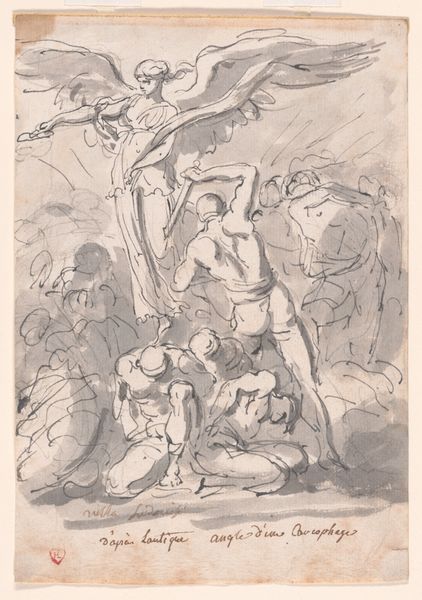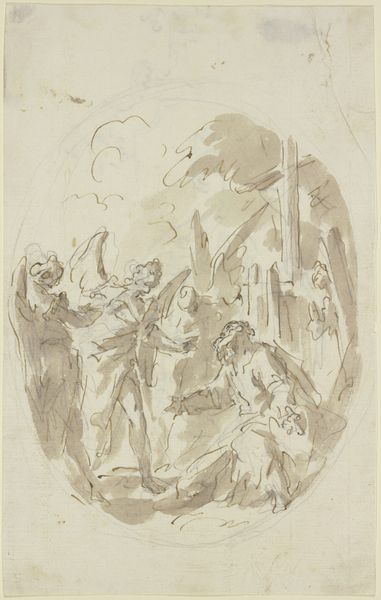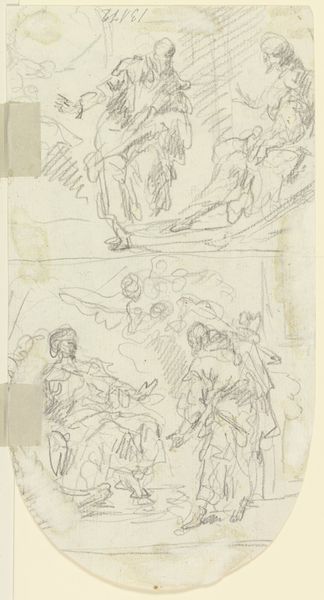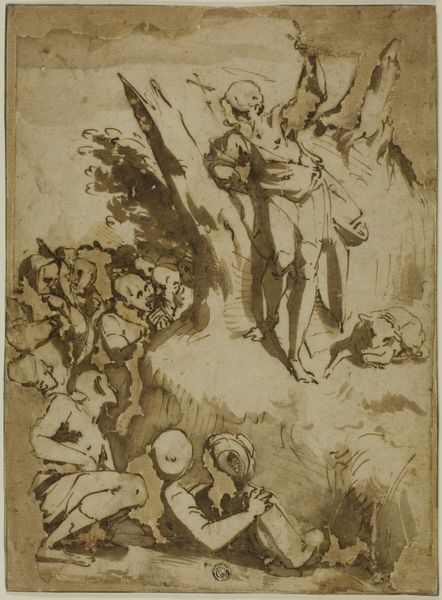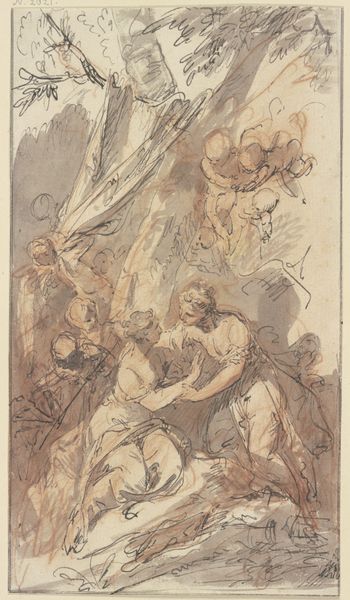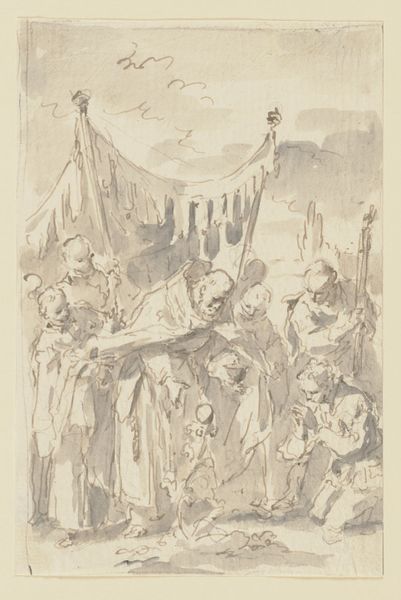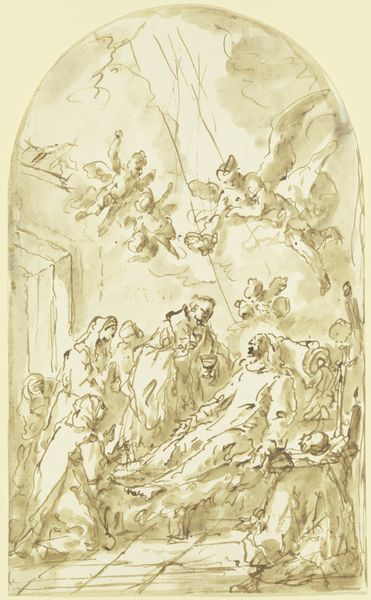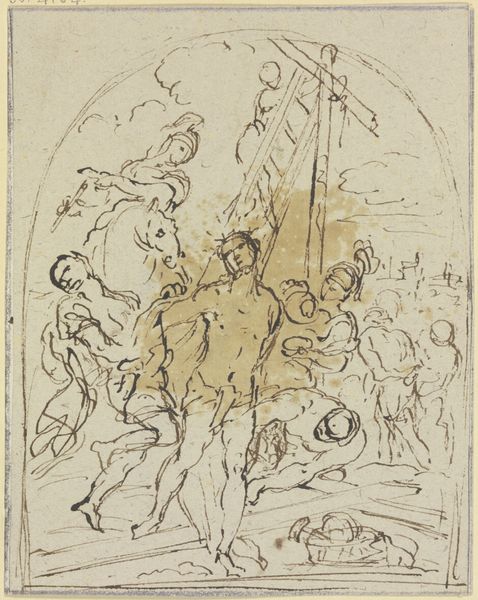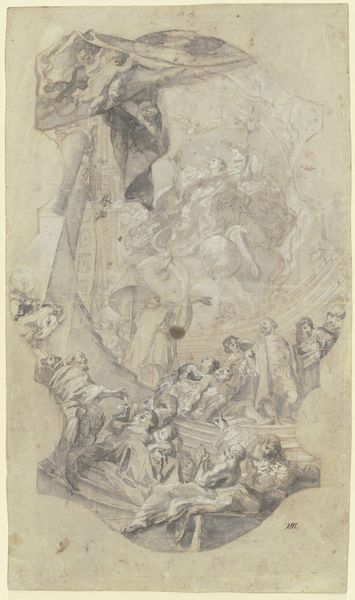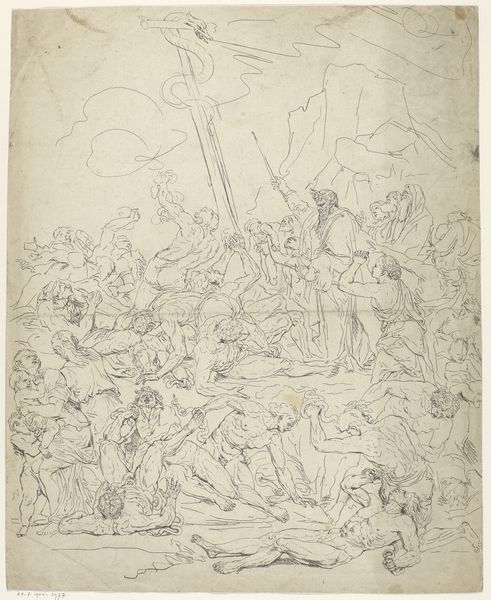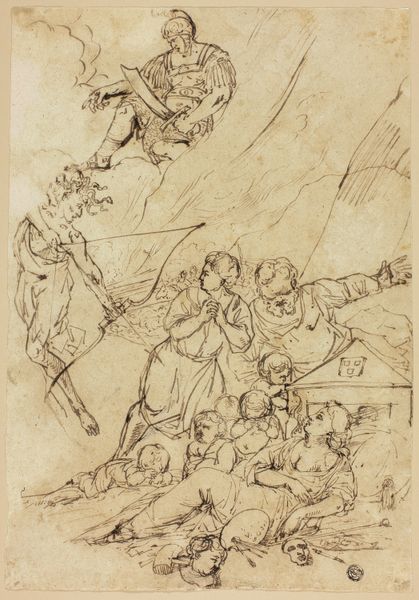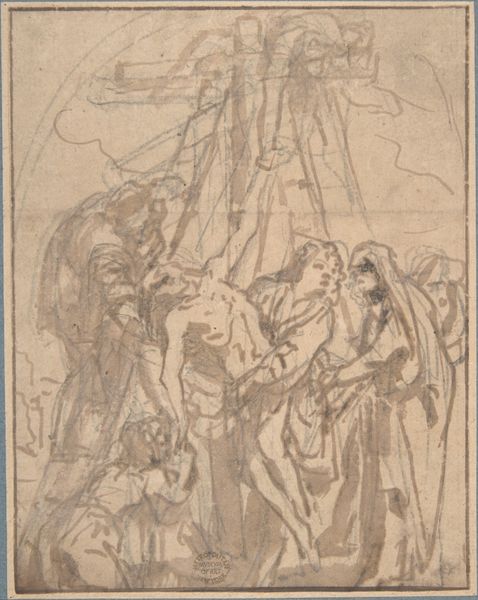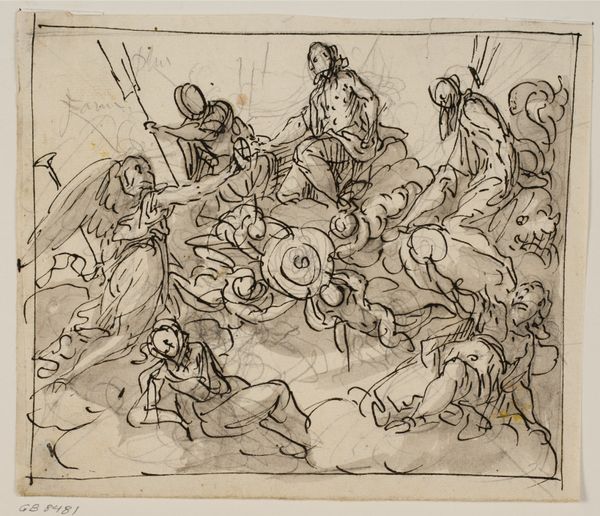
drawing, ink, chalk
#
drawing
#
baroque
#
figuration
#
ink
#
chalk
#
history-painting
Copyright: Public Domain
Curator: Gaspare Diziani’s “Death of the Virgin” is currently held here at the Städelsches Kunstinstitut. This study, composed of ink and chalk, gives us insight into his baroque sensibilities and figurations. Editor: It's haunting. The soft grey wash creates such a subdued and reverent atmosphere. You can almost feel the weight of the scene, the hush surrounding her deathbed. Curator: Absolutely. Diziani clearly wants us to focus on the spectacle. This was the artistic climate of his time, one designed to instill faith, a visual rhetoric which absolutely impacted his commission work as it was often used for religious and political reasons. Editor: It is the material quality I notice most here. The contrast between the delicate chalk lines defining the figures and the ink wash giving them form makes this scene especially powerful. The ephemeral medium mirrors the passing of life itself. And the way light appears to interact… Did he carefully choose paper stock to enhance it? Curator: He was certainly aware of his patron! Diziani was deeply connected to the art market. Remember, Venetian artists during his period frequently adapted their styles according to market trends, meaning their studios and choice of presentation were carefully attuned to attract the best offers from dealers or high ranking officers within the church. Editor: Still, there's something intrinsically vulnerable revealed through these raw materials. It bypasses some of that staging by showing how things were actually handled during the studio process; it grounds the miraculous elements, that light and gesture, with what goes into making such depictions believable. Curator: What's so striking is the staging; her final passing surrounded by sorrowful disciples… I am compelled by how it all contributed toward the narratives presented to a public keen on seeing displays of emotion and grandeur during this time. Editor: For me, I’m stuck on how Diziani translated the divine through very earthly materials; chalk, ink, paper. The process, even in its initial sketched stages, imbues the subject with tangible humanity and evokes profound contemplation. Curator: Viewing the finality of death in those times reminds us of a period where image making carried substantial social power. It encourages discourse about power dynamics existing even within creative spheres! Editor: And by paying attention to materials, we begin seeing how these political, historical factors are brought to life through artistic skill and craftsmanship. What a privilege to share such observations with our audience.
Comments
No comments
Be the first to comment and join the conversation on the ultimate creative platform.
